(Mise à jour pour être en accord avec la nouvelle version de la source de la page) |
|||
| Ligne 3 : | Ligne 3 : | ||
|Main_Picture_annotation={"version":"3.5.0","objects":[{"type":"image","version":"3.5.0","originX":"left","originY":"top","left":-73,"top":-16,"width":6000,"height":4000,"fill":"rgb(0,0,0)","stroke":null,"strokeWidth":0,"strokeDashArray":null,"strokeLineCap":"butt","strokeDashOffset":0,"strokeLineJoin":"miter","strokeMiterLimit":4,"scaleX":0.12,"scaleY":0.12,"angle":0,"flipX":false,"flipY":false,"opacity":1,"shadow":null,"visible":true,"clipTo":null,"backgroundColor":"","fillRule":"nonzero","paintFirst":"fill","globalCompositeOperation":"source-over","transformMatrix":null,"skewX":0,"skewY":0,"crossOrigin":"","cropX":0,"cropY":0,"src":"https://wiki.lowtechlab.org/images/9/9b/Marmite_norv_gienne_pour_nomades_DSCF4536.JPG","filters":[]}],"height":449.4325346784363,"width":600} | |Main_Picture_annotation={"version":"3.5.0","objects":[{"type":"image","version":"3.5.0","originX":"left","originY":"top","left":-73,"top":-16,"width":6000,"height":4000,"fill":"rgb(0,0,0)","stroke":null,"strokeWidth":0,"strokeDashArray":null,"strokeLineCap":"butt","strokeDashOffset":0,"strokeLineJoin":"miter","strokeMiterLimit":4,"scaleX":0.12,"scaleY":0.12,"angle":0,"flipX":false,"flipY":false,"opacity":1,"shadow":null,"visible":true,"clipTo":null,"backgroundColor":"","fillRule":"nonzero","paintFirst":"fill","globalCompositeOperation":"source-over","transformMatrix":null,"skewX":0,"skewY":0,"crossOrigin":"","cropX":0,"cropY":0,"src":"https://wiki.lowtechlab.org/images/9/9b/Marmite_norv_gienne_pour_nomades_DSCF4536.JPG","filters":[]}],"height":449.4325346784363,"width":600} | ||
|Licences=Attribution (CC BY) | |Licences=Attribution (CC BY) | ||
| − | |Description=Fireless cooker made of a woollen blanket for steaming food. The principle of the fireless cooker or Norwegian pot is to place a stewpot in an insulating receptacle after boiling for slow cooking without using a heat source. This specific space-saving model is perfectly suited to nomadic life, especially in a van, but not only, and can be adapted to various sizes of stewpot or saucepan. | + | |Description=<div class="mw-translate-fuzzy"> |
| + | Fireless cooker made of a woollen blanket for steaming food. The principle of the fireless cooker or Norwegian pot is to place a stewpot in an insulating receptacle after boiling for slow cooking without using a heat source. This specific space-saving model is perfectly suited to nomadic life, especially in a van, but not only, and can be adapted to various sizes of stewpot or saucepan. | ||
| + | </div> | ||
|Area=Food, Energy | |Area=Food, Energy | ||
|Type=Tutorial | |Type=Tutorial | ||
| Ligne 14 : | Ligne 16 : | ||
}} | }} | ||
{{Introduction | {{Introduction | ||
| − | |Introduction=The fireless cooker is a steaming device that has been around for thousands of years. The principle is to place a pot in an insulated container after boiling for slow cooking without a heat source. In addition to saving energy, the other advantage is that the nutrients are preserved. The dishes are tasty because they are cooked slowly; we've tested and approved it extensively, particularly with lentil and soups. | + | |Introduction=The fireless cooker is a steaming device that has been around for thousands of years. The principle is to place a pot in an insulated container after boiling for slow cooking without a heat source. In addition to saving energy, the other advantage is that the nutrients are preserved. The dishes are tasty because they are cooked slowly; we've tested and approved it extensively, particularly with lentil and soups. |
| − | |Info|There are several different models, but in this tutorial we're going to show you the one made from a blanket, which is more suited to life in a van, as it doesn't take up much space and can be adapted to different sizes of stewpot thanks to its Velcro straps. | + | |Info|There are several different models, but in this tutorial we're going to show you the one made from a blanket, which is more suited to life in a van, as it doesn't take up much space and can be adapted to different sizes of stewpot thanks to its Velcro straps. |
| − | Moreover, it can be used as a quilt to put over your duvet or on your lap to get warmer - very useful for those chilly winter nights when the heating is off! | + | Moreover, it can be used as a quilt to put over your duvet or on your lap to get warmer - very useful for those chilly winter nights when the heating is off! |
|Idea|Make sure that you use the largest stewpot you can find and that the lid fits perfectly | |Idea|Make sure that you use the largest stewpot you can find and that the lid fits perfectly | ||
| − | Although the term "Norwegian pot" is relatively recent, the principle of the "haybox" was used in Hebrew tradition on Shabbat (Mireille Saimpaul, "Histoire de cuire sans feu ou presque"). Norwegian pot is just one of many names for this concept: pressure cooker, fireless cooker, cooking thermos, cooking box, magic box, wonderbox... According to Mireille Saimpaul, the origin of the name "Norwegian cooking pot" comes from the fact that "Norwegian automatic cookers" were exhibited at the 1867 Universal Exhibition in Paris and caused a sensation. | + | Although the term "Norwegian pot" is relatively recent, the principle of the "haybox" was used in Hebrew tradition on Shabbat (Mireille Saimpaul, "Histoire de cuire sans feu ou presque"). Norwegian pot is just one of many names for this concept: pressure cooker, fireless cooker, cooking thermos, cooking box, magic box, wonderbox... According to Mireille Saimpaul, the origin of the name "Norwegian cooking pot" comes from the fact that "Norwegian automatic cookers" were exhibited at the 1867 Universal Exhibition in Paris and caused a sensation. |
| − | |||
We'd like to extend our warmest thanks to the Berlioz youth and culture centre in Pau, which allowed us to attend Françoise and Françoise's workshop free of charge to make this magnificent Norwegian pot. | We'd like to extend our warmest thanks to the Berlioz youth and culture centre in Pau, which allowed us to attend Françoise and Françoise's workshop free of charge to make this magnificent Norwegian pot. | ||
| Ligne 37 : | Ligne 38 : | ||
|Material=• A blanket for a double bed (preferably wool) | |Material=• A blanket for a double bed (preferably wool) | ||
| − | • Fabric | + | • Fabric |
| − | • Sewing thread | + | • Sewing thread |
• 2 Velcro strips, approx. 30 cm long | • 2 Velcro strips, approx. 30 cm long | ||
| − | |Tools=• A pair of scissors | + | |Tools=• A pair of scissors |
• Needles | • Needles | ||
| Ligne 52 : | Ligne 53 : | ||
{{Tuto Step | {{Tuto Step | ||
|Step_Title=Preparing insulation | |Step_Title=Preparing insulation | ||
| − | |Step_Content=* Fold the blanket into thirds and check that this is enough to enclose your stewpot. | + | |Step_Content=<div class="mw-translate-fuzzy"> |
| + | * Fold the blanket into thirds and check that this is enough to enclose your stewpot. | ||
* Cut the blanket into three squares of equal size | * Cut the blanket into three squares of equal size | ||
* With the rest, cut two squares the width of the stewpot | * With the rest, cut two squares the width of the stewpot | ||
| Ligne 58 : | Ligne 60 : | ||
* Overlay the three large squares on top of each other | * Overlay the three large squares on top of each other | ||
* Sew them together by hand around the edges | * Sew them together by hand around the edges | ||
| + | </div> | ||
|Step_Picture_00=Marmite_norv_gienne_pour_nomades_Screenshot_from_2023-02-14_16-34-13.png | |Step_Picture_00=Marmite_norv_gienne_pour_nomades_Screenshot_from_2023-02-14_16-34-13.png | ||
|Step_Picture_00_annotation={"version":"3.5.0","objects":[{"type":"image","version":"3.5.0","originX":"left","originY":"top","left":-51,"top":-20,"width":1920,"height":1080,"fill":"rgb(0,0,0)","stroke":null,"strokeWidth":0,"strokeDashArray":null,"strokeLineCap":"butt","strokeDashOffset":0,"strokeLineJoin":"miter","strokeMiterLimit":4,"scaleX":0.37,"scaleY":0.37,"angle":0,"flipX":false,"flipY":false,"opacity":1,"shadow":null,"visible":true,"clipTo":null,"backgroundColor":"","fillRule":"nonzero","paintFirst":"fill","globalCompositeOperation":"source-over","transformMatrix":null,"skewX":0,"skewY":0,"crossOrigin":"","cropX":0,"cropY":0,"src":"https://wiki.lowtechlab.org/images/e/e6/Marmite_norv_gienne_pour_nomades_Screenshot_from_2023-02-14_16-34-13.png","filters":[]}],"height":337.5921375921376,"width":600} | |Step_Picture_00_annotation={"version":"3.5.0","objects":[{"type":"image","version":"3.5.0","originX":"left","originY":"top","left":-51,"top":-20,"width":1920,"height":1080,"fill":"rgb(0,0,0)","stroke":null,"strokeWidth":0,"strokeDashArray":null,"strokeLineCap":"butt","strokeDashOffset":0,"strokeLineJoin":"miter","strokeMiterLimit":4,"scaleX":0.37,"scaleY":0.37,"angle":0,"flipX":false,"flipY":false,"opacity":1,"shadow":null,"visible":true,"clipTo":null,"backgroundColor":"","fillRule":"nonzero","paintFirst":"fill","globalCompositeOperation":"source-over","transformMatrix":null,"skewX":0,"skewY":0,"crossOrigin":"","cropX":0,"cropY":0,"src":"https://wiki.lowtechlab.org/images/e/e6/Marmite_norv_gienne_pour_nomades_Screenshot_from_2023-02-14_16-34-13.png","filters":[]}],"height":337.5921375921376,"width":600} | ||
| Ligne 70 : | Ligne 73 : | ||
{{Tuto Step | {{Tuto Step | ||
|Step_Title=Making the cover | |Step_Title=Making the cover | ||
| − | |Step_Content=* Cut the fabric to cover both sides of the blanket squares | + | |Step_Content=<div class="mw-translate-fuzzy"> |
| + | * Cut the fabric to cover both sides of the blanket squares | ||
* Cut two Velcro strips about 30 cm long | * Cut two Velcro strips about 30 cm long | ||
* Position the Velcro strips on the fabric, making sure that the two opposite sides overlap when you close the Norwegian pot on the stewpot. | * Position the Velcro strips on the fabric, making sure that the two opposite sides overlap when you close the Norwegian pot on the stewpot. | ||
| Ligne 81 : | Ligne 85 : | ||
* Sew the last edge of the cover. You can also sew on a zip to make the cover easier to wash. | * Sew the last edge of the cover. You can also sew on a zip to make the cover easier to wash. | ||
* You can now use your Norwegian pot! | * You can now use your Norwegian pot! | ||
| + | </div> | ||
|Step_Picture_00=Marmite_norv_gienne_pour_nomades_Screenshot_from_2023-02-14_17-03-33.png | |Step_Picture_00=Marmite_norv_gienne_pour_nomades_Screenshot_from_2023-02-14_17-03-33.png | ||
|Step_Picture_00_annotation={"version":"3.5.0","objects":[{"type":"image","version":"3.5.0","originX":"left","originY":"top","left":0,"top":0.25,"width":1920,"height":1080,"fill":"rgb(0,0,0)","stroke":null,"strokeWidth":0,"strokeDashArray":null,"strokeLineCap":"butt","strokeDashOffset":0,"strokeLineJoin":"miter","strokeMiterLimit":4,"scaleX":0.31,"scaleY":0.31,"angle":0,"flipX":false,"flipY":false,"opacity":1,"shadow":null,"visible":true,"clipTo":null,"backgroundColor":"","fillRule":"nonzero","paintFirst":"fill","globalCompositeOperation":"source-over","transformMatrix":null,"skewX":0,"skewY":0,"crossOrigin":"","cropX":0,"cropY":0,"src":"https://wiki.lowtechlab.org/images/d/d8/Marmite_norv_gienne_pour_nomades_Screenshot_from_2023-02-14_17-03-33.png","filters":[]}],"height":338,"width":600} | |Step_Picture_00_annotation={"version":"3.5.0","objects":[{"type":"image","version":"3.5.0","originX":"left","originY":"top","left":0,"top":0.25,"width":1920,"height":1080,"fill":"rgb(0,0,0)","stroke":null,"strokeWidth":0,"strokeDashArray":null,"strokeLineCap":"butt","strokeDashOffset":0,"strokeLineJoin":"miter","strokeMiterLimit":4,"scaleX":0.31,"scaleY":0.31,"angle":0,"flipX":false,"flipY":false,"opacity":1,"shadow":null,"visible":true,"clipTo":null,"backgroundColor":"","fillRule":"nonzero","paintFirst":"fill","globalCompositeOperation":"source-over","transformMatrix":null,"skewX":0,"skewY":0,"crossOrigin":"","cropX":0,"cropY":0,"src":"https://wiki.lowtechlab.org/images/d/d8/Marmite_norv_gienne_pour_nomades_Screenshot_from_2023-02-14_17-03-33.png","filters":[]}],"height":338,"width":600} | ||
| Ligne 94 : | Ligne 99 : | ||
{{Tuto Step | {{Tuto Step | ||
|Step_Title=Using the fireless cooker | |Step_Title=Using the fireless cooker | ||
| − | |Step_Content=* Start cooking on the heat using your most isolated pot | + | |Step_Content=<div class="mw-translate-fuzzy"> |
| + | * Start cooking on the heat using your most isolated pot | ||
* Place the lid on the pot and bring to the boil. | * Place the lid on the pot and bring to the boil. | ||
* Further cook for a few minutes (depending on the recipe chosen, the pre-cooking time will vary). | * Further cook for a few minutes (depending on the recipe chosen, the pre-cooking time will vary). | ||
| Ligne 103 : | Ligne 109 : | ||
* Open the pot and check that it is cooked through and still hot. | * Open the pot and check that it is cooked through and still hot. | ||
* All you have to do now is enjoy your tasty recipe. | * All you have to do now is enjoy your tasty recipe. | ||
| + | </div> | ||
|Step_Picture_00=Marmite_norv_gienne_pour_nomades_Screenshot_from_2023-02-14_18-02-30.png | |Step_Picture_00=Marmite_norv_gienne_pour_nomades_Screenshot_from_2023-02-14_18-02-30.png | ||
|Step_Picture_00_annotation={"version":"3.5.0","objects":[{"type":"image","version":"3.5.0","originX":"left","originY":"top","left":-37,"top":-21,"width":1920,"height":1080,"fill":"rgb(0,0,0)","stroke":null,"strokeWidth":0,"strokeDashArray":null,"strokeLineCap":"butt","strokeDashOffset":0,"strokeLineJoin":"miter","strokeMiterLimit":4,"scaleX":0.36,"scaleY":0.36,"angle":0,"flipX":false,"flipY":false,"opacity":1,"shadow":null,"visible":true,"clipTo":null,"backgroundColor":"","fillRule":"nonzero","paintFirst":"fill","globalCompositeOperation":"source-over","transformMatrix":null,"skewX":0,"skewY":0,"crossOrigin":"","cropX":0,"cropY":0,"src":"https://wiki.lowtechlab.org/images/a/a2/Marmite_norv_gienne_pour_nomades_Screenshot_from_2023-02-14_18-02-30.png","filters":[]}],"height":338.22115384615387,"width":600} | |Step_Picture_00_annotation={"version":"3.5.0","objects":[{"type":"image","version":"3.5.0","originX":"left","originY":"top","left":-37,"top":-21,"width":1920,"height":1080,"fill":"rgb(0,0,0)","stroke":null,"strokeWidth":0,"strokeDashArray":null,"strokeLineCap":"butt","strokeDashOffset":0,"strokeLineJoin":"miter","strokeMiterLimit":4,"scaleX":0.36,"scaleY":0.36,"angle":0,"flipX":false,"flipY":false,"opacity":1,"shadow":null,"visible":true,"clipTo":null,"backgroundColor":"","fillRule":"nonzero","paintFirst":"fill","globalCompositeOperation":"source-over","transformMatrix":null,"skewX":0,"skewY":0,"crossOrigin":"","cropX":0,"cropY":0,"src":"https://wiki.lowtechlab.org/images/a/a2/Marmite_norv_gienne_pour_nomades_Screenshot_from_2023-02-14_18-02-30.png","filters":[]}],"height":338.22115384615387,"width":600} | ||
| Ligne 117 : | Ligne 124 : | ||
{{Tuto Step | {{Tuto Step | ||
|Step_Title=Tips | |Step_Title=Tips | ||
| − | |Step_Content=* A wool blanket will limit the number of layers you need to use for insulation, but you can use other insulating materials. | + | |Step_Content=<div class="mw-translate-fuzzy"> |
| + | * A wool blanket will limit the number of layers you need to use for insulation, but you can use other insulating materials. | ||
* Velcro straps allow you to use different sizes of stewpot or saucepan. Make sure you make your Norwegian pot with the largest pot you're going to use. | * Velcro straps allow you to use different sizes of stewpot or saucepan. Make sure you make your Norwegian pot with the largest pot you're going to use. | ||
* We recommend that you recycle materials. You can find woollen blankets and cotton fabrics at recycling centres. | * We recommend that you recycle materials. You can find woollen blankets and cotton fabrics at recycling centres. | ||
| Ligne 125 : | Ligne 133 : | ||
* If you have left your dish to simmer for more than 2 hours, there is a risk that the temperature will have fallen below 60 degrees and that bacteria will have developed. It is therefore advisable to bring your dish to the boil before eating it. | * If you have left your dish to simmer for more than 2 hours, there is a risk that the temperature will have fallen below 60 degrees and that bacteria will have developed. It is therefore advisable to bring your dish to the boil before eating it. | ||
* You can use your Norwegian pot as a quilt over your duvet for extra warmth around the feet especially when it is still warm after having cooked! | * You can use your Norwegian pot as a quilt over your duvet for extra warmth around the feet especially when it is still warm after having cooked! | ||
| + | </div> | ||
|Step_Picture_00=Marmite_norv_gienne_pour_nomades_DSCF4050.JPG | |Step_Picture_00=Marmite_norv_gienne_pour_nomades_DSCF4050.JPG | ||
|Step_Picture_00_annotation={"version":"3.5.0","objects":[{"type":"image","version":"3.5.0","originX":"left","originY":"top","left":-77,"top":-27,"width":6000,"height":4000,"fill":"rgb(0,0,0)","stroke":null,"strokeWidth":0,"strokeDashArray":null,"strokeLineCap":"butt","strokeDashOffset":0,"strokeLineJoin":"miter","strokeMiterLimit":4,"scaleX":0.13,"scaleY":0.13,"angle":0,"flipX":false,"flipY":false,"opacity":1,"shadow":null,"visible":true,"clipTo":null,"backgroundColor":"","fillRule":"nonzero","paintFirst":"fill","globalCompositeOperation":"source-over","transformMatrix":null,"skewX":0,"skewY":0,"crossOrigin":"","cropX":0,"cropY":0,"src":"https://wiki.lowtechlab.org/images/c/cc/Marmite_norv_gienne_pour_nomades_DSCF4050.JPG","filters":[]}],"height":450,"width":600} | |Step_Picture_00_annotation={"version":"3.5.0","objects":[{"type":"image","version":"3.5.0","originX":"left","originY":"top","left":-77,"top":-27,"width":6000,"height":4000,"fill":"rgb(0,0,0)","stroke":null,"strokeWidth":0,"strokeDashArray":null,"strokeLineCap":"butt","strokeDashOffset":0,"strokeLineJoin":"miter","strokeMiterLimit":4,"scaleX":0.13,"scaleY":0.13,"angle":0,"flipX":false,"flipY":false,"opacity":1,"shadow":null,"visible":true,"clipTo":null,"backgroundColor":"","fillRule":"nonzero","paintFirst":"fill","globalCompositeOperation":"source-over","transformMatrix":null,"skewX":0,"skewY":0,"crossOrigin":"","cropX":0,"cropY":0,"src":"https://wiki.lowtechlab.org/images/c/cc/Marmite_norv_gienne_pour_nomades_DSCF4050.JPG","filters":[]}],"height":450,"width":600} | ||
Version du 26 janvier 2024 à 23:41
Description
Fireless cooker made of a woollen blanket for steaming food. The principle of the fireless cooker or Norwegian pot is to place a stewpot in an insulating receptacle after boiling for slow cooking without using a heat source. This specific space-saving model is perfectly suited to nomadic life, especially in a van, but not only, and can be adapted to various sizes of stewpot or saucepan.
Fireless cooker made of a woollen blanket for steaming food. The principle of the fireless cooker or Norwegian pot is to place a stewpot in an insulating receptacle after boiling for slow cooking without using a heat source. This specific space-saving model is perfectly suited to nomadic life, especially in a van, but not only, and can be adapted to various sizes of stewpot or saucepan.
Introduction
Youtube
Étape 1 - Preparing insulation
- Fold the blanket into thirds and check that this is enough to enclose your stewpot.
- Cut the blanket into three squares of equal size
- With the rest, cut two squares the width of the stewpot
- Sew these two small pieces in top of each other at the centre of one of the larger squares to make a double base for the stewpot
- Overlay the three large squares on top of each other
- Sew them together by hand around the edges
Étape 2 - Making the cover
- Cut the fabric to cover both sides of the blanket squares
- Cut two Velcro strips about 30 cm long
- Position the Velcro strips on the fabric, making sure that the two opposite sides overlap when you close the Norwegian pot on the stewpot.
- Secure the Velcro strips to the fabric with pins
- Sew them to the fabric
- Fold the fabric in half, overlapping the edges
- Sew two edges of the fabric together to make the cover
- Slide the blankets squares into the cover
- Stitch in the centre to keep the blankets in place inside the cover
- Sew the last edge of the cover. You can also sew on a zip to make the cover easier to wash.
- You can now use your Norwegian pot!
Étape 3 - Using the fireless cooker
- Start cooking on the heat using your most isolated pot
- Place the lid on the pot and bring to the boil.
- Further cook for a few minutes (depending on the recipe chosen, the pre-cooking time will vary).
- Place your Norwegian pot wide open on a flat surface
- Stop cooking and place the boiling stewpot in the centre of the Norwegian pot
- Close the edges with the Velcro strips, taking care not to leave any gaps between the pot and the fabric.
- Allow to stew inside the Norwegian pot for the minimum time required according to the recipe, usually double the normal cooking time.
- Open the pot and check that it is cooked through and still hot.
- All you have to do now is enjoy your tasty recipe.
Étape 4 - Tips
- A wool blanket will limit the number of layers you need to use for insulation, but you can use other insulating materials.
- Velcro straps allow you to use different sizes of stewpot or saucepan. Make sure you make your Norwegian pot with the largest pot you're going to use.
- We recommend that you recycle materials. You can find woollen blankets and cotton fabrics at recycling centres.
- When cooking, it's best to choose a cast-iron or terracotta casserole, as the heat loses more slowly, but the most important thing is that the lid fits the pan properly so that it doesn't leak.
- Tighten the Velcro straps as much as possible to prevent heat loss.
- Make sure that there is enough water in the pot to simmer for several hours.
- If you have left your dish to simmer for more than 2 hours, there is a risk that the temperature will have fallen below 60 degrees and that bacteria will have developed. It is therefore advisable to bring your dish to the boil before eating it.
- You can use your Norwegian pot as a quilt over your duvet for extra warmth around the feet especially when it is still warm after having cooked!
Notes et références
Tutorial of a wooden haybox from the Low-Tech Lab : https://wiki.lowtechlab.org/wiki/Marmite_norv%C3%A9gienne/en
Published
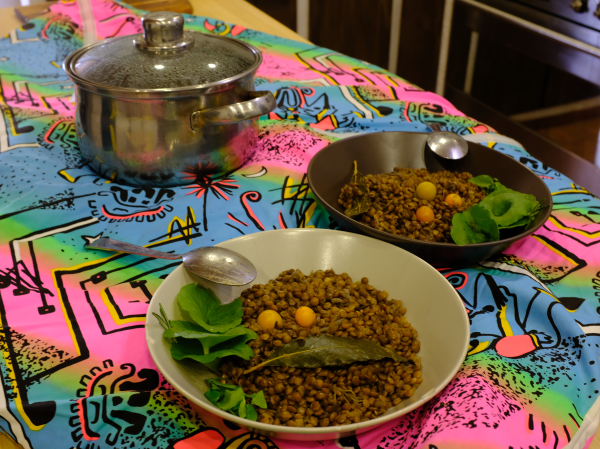
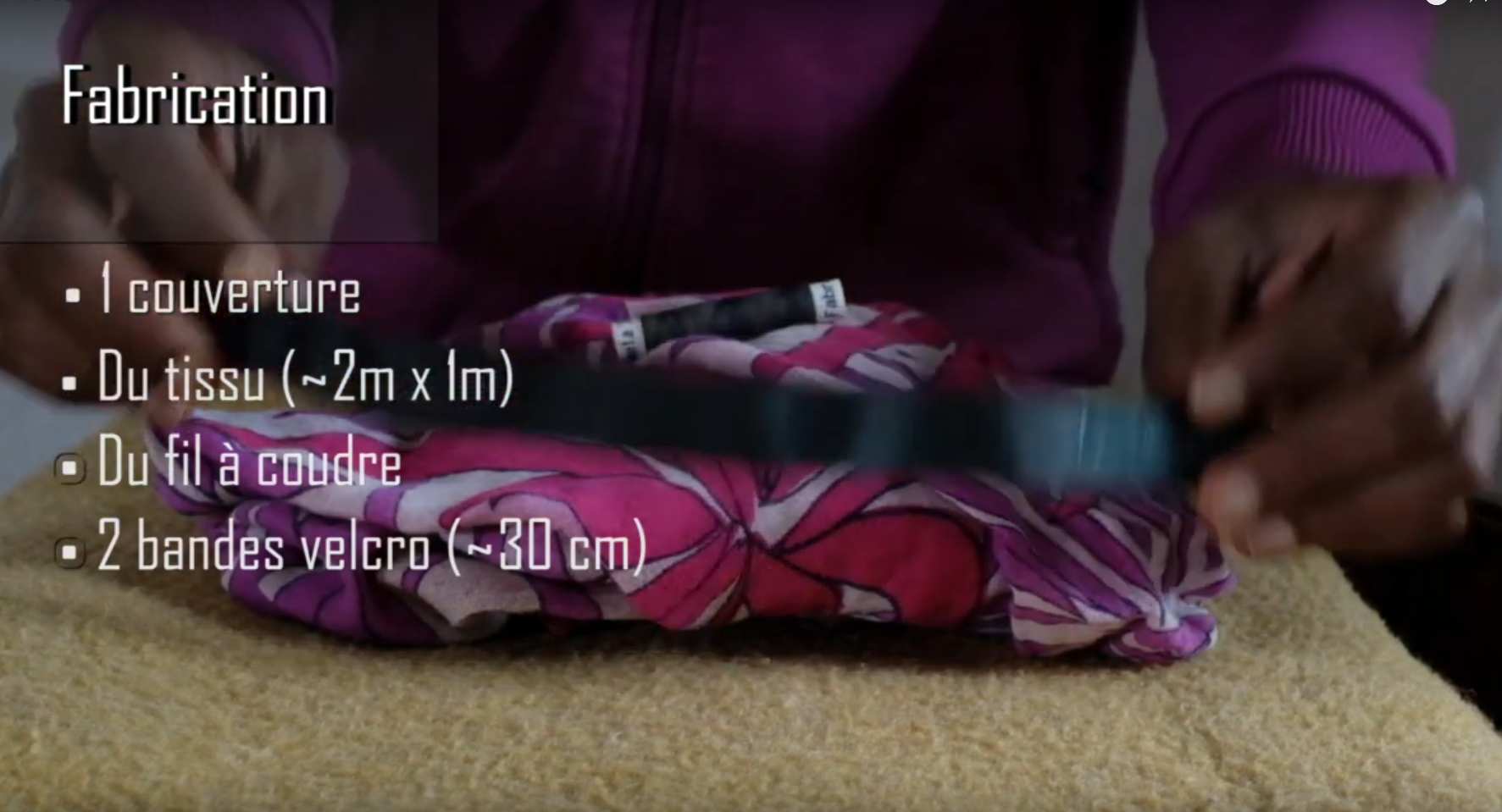
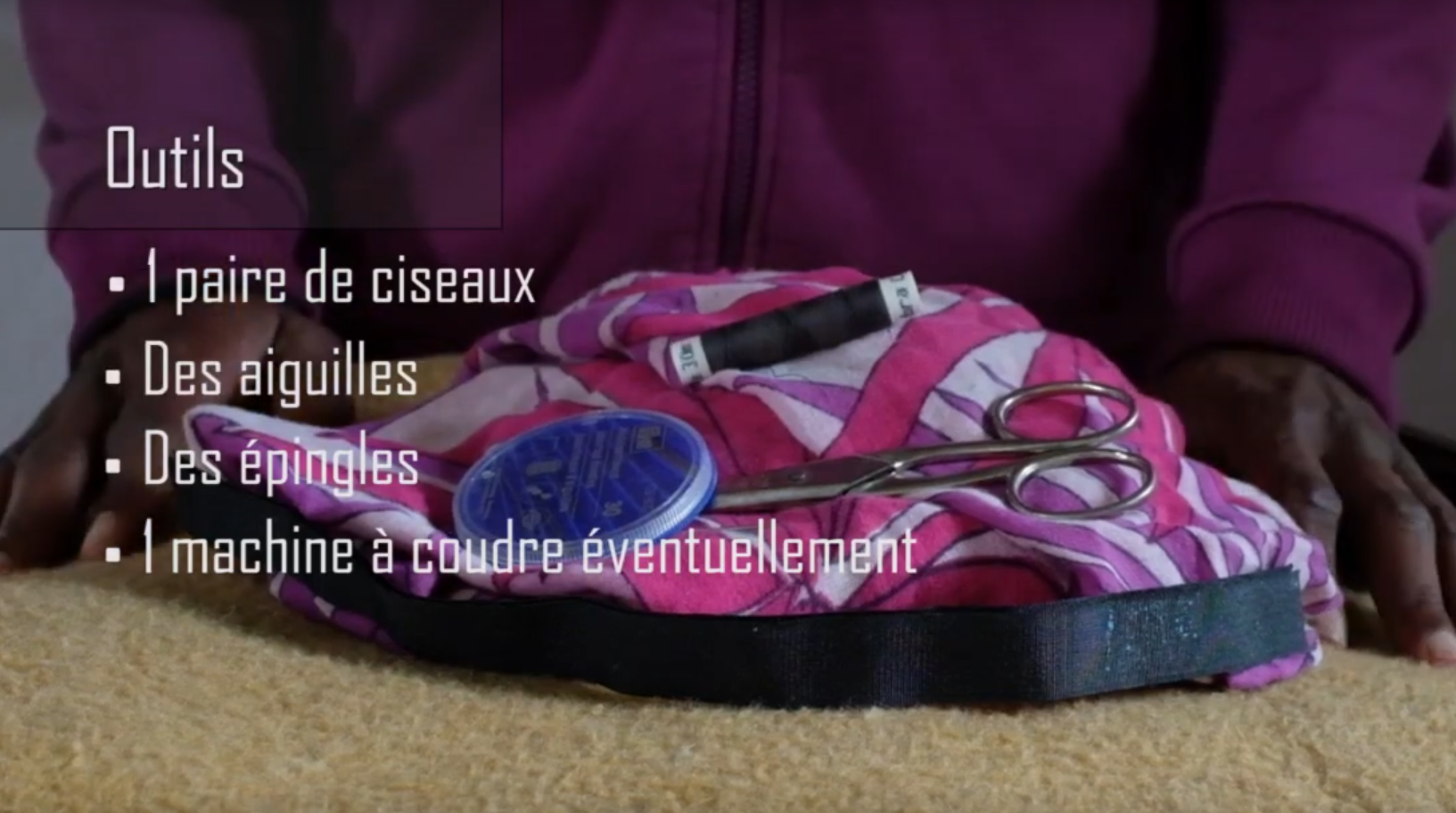
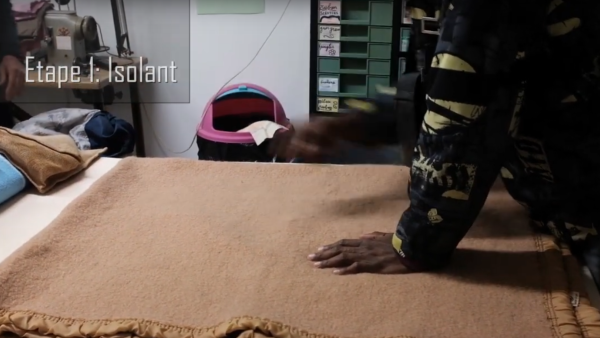
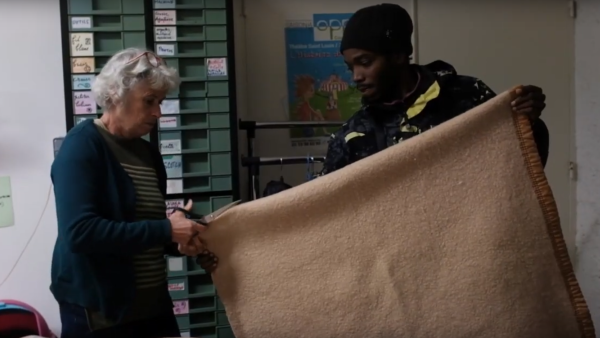
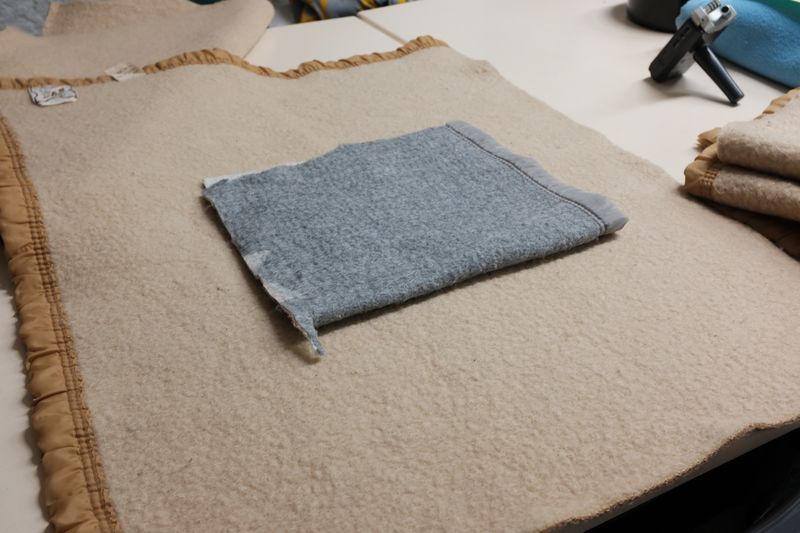
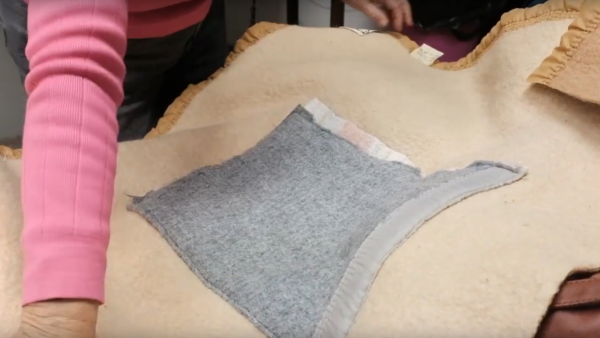
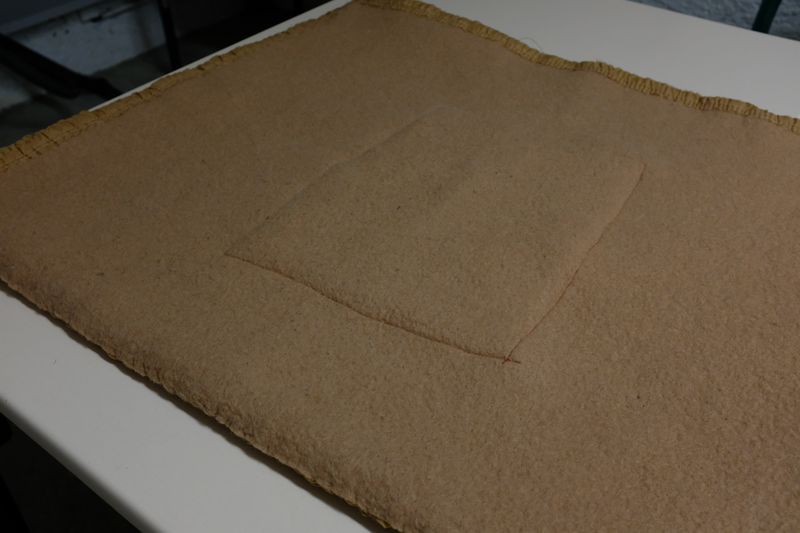
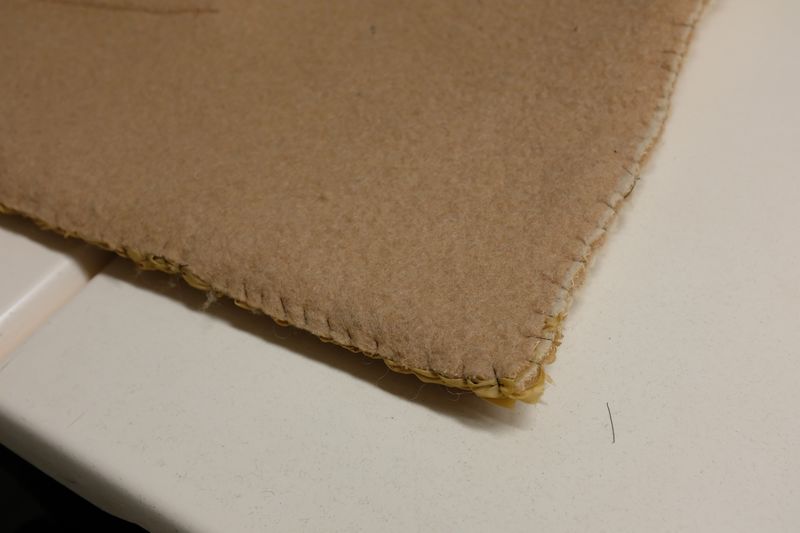
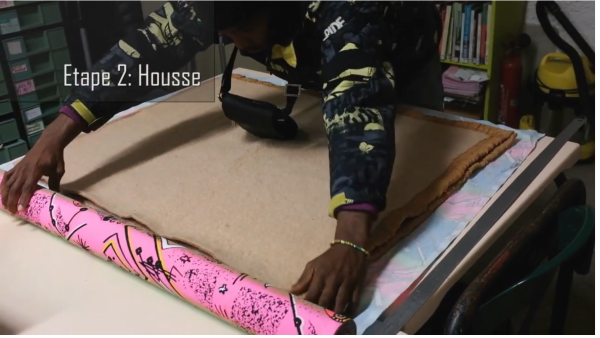
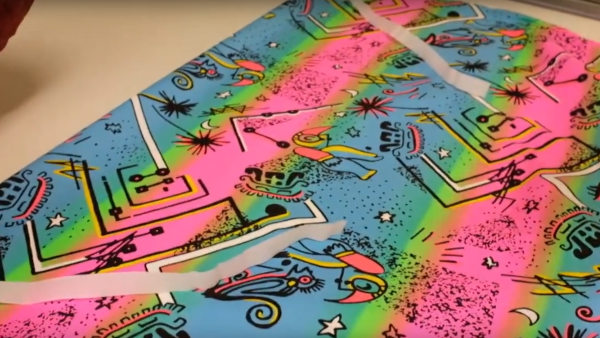
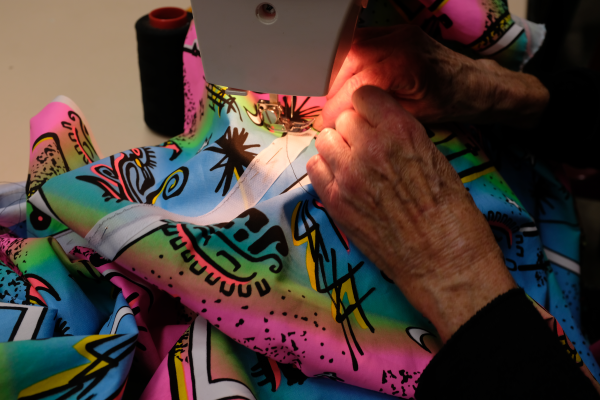
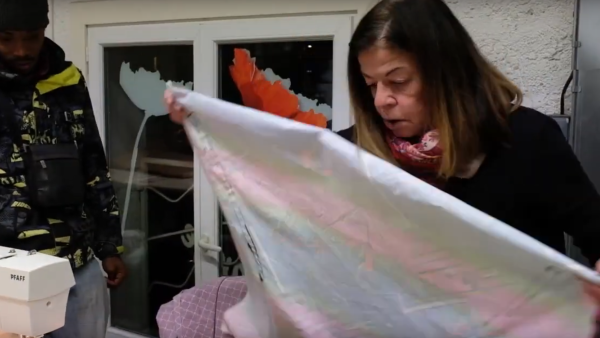
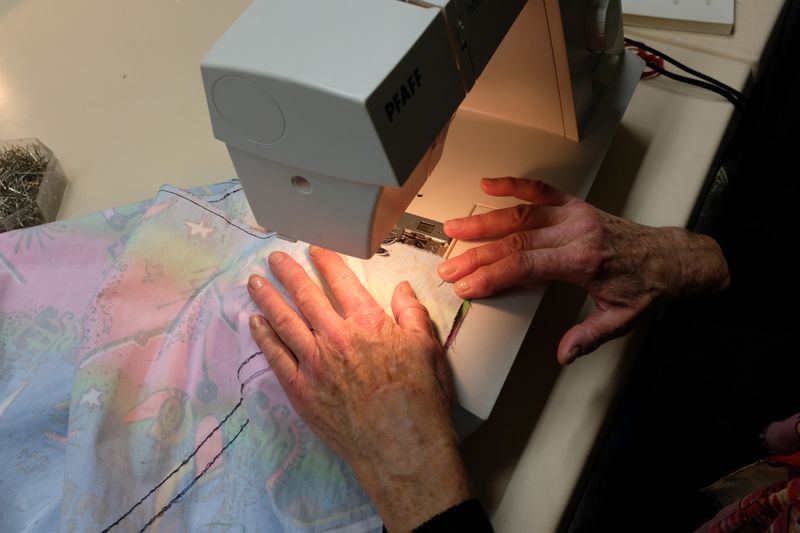
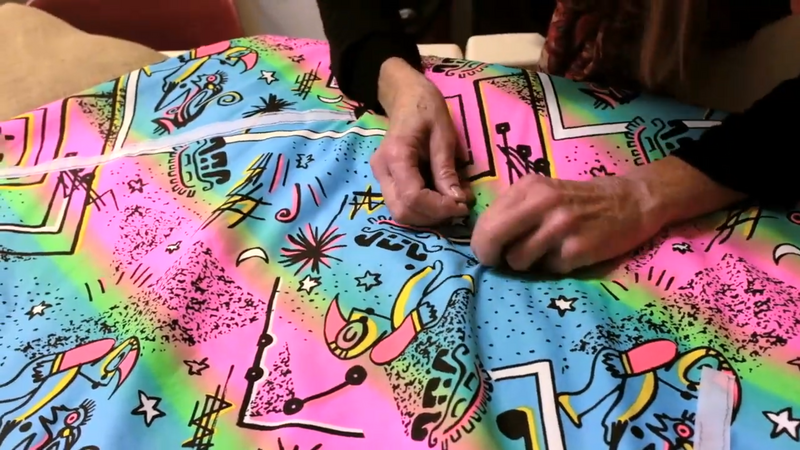
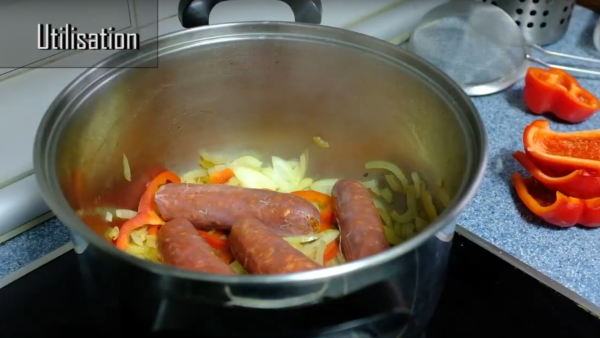
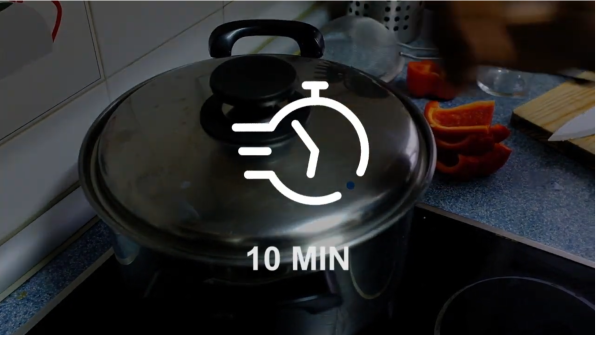
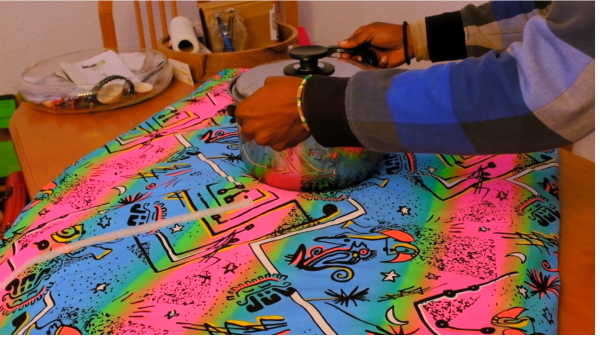
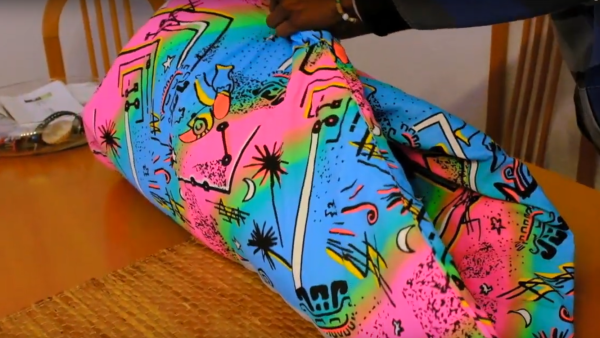
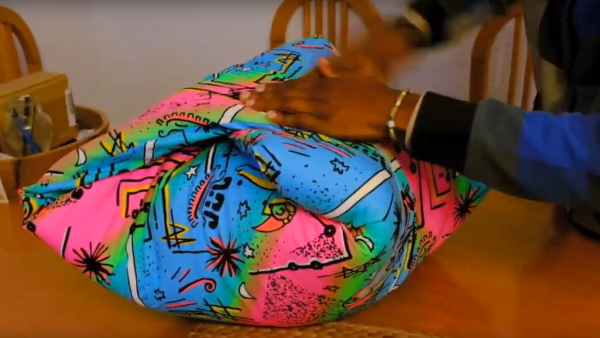
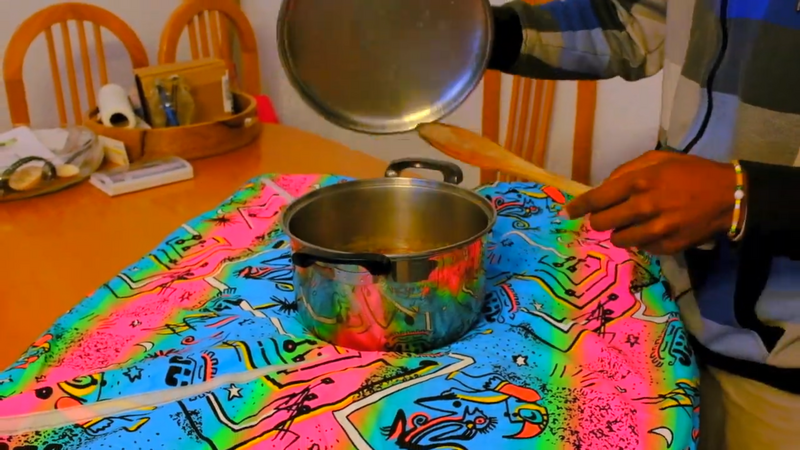
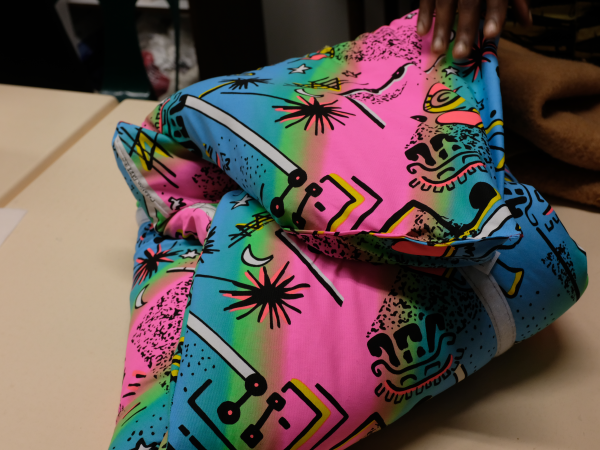
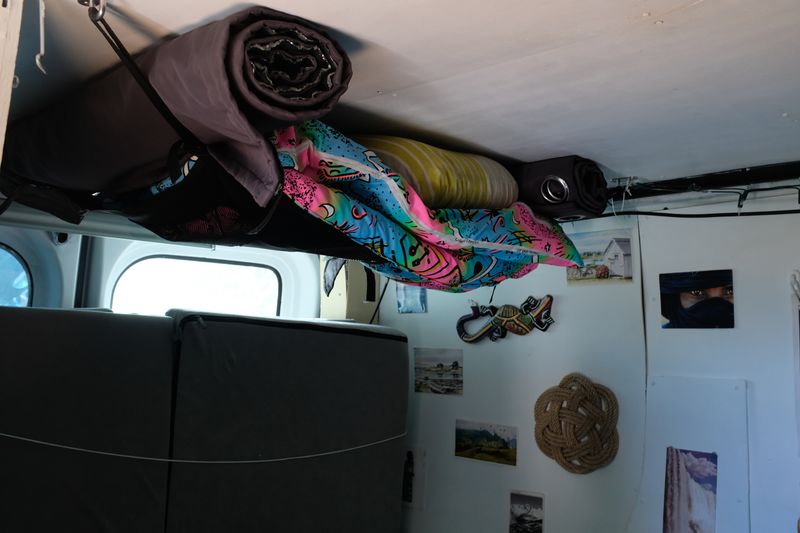
 Français
Français English
English Deutsch
Deutsch Español
Español Italiano
Italiano Português
Português